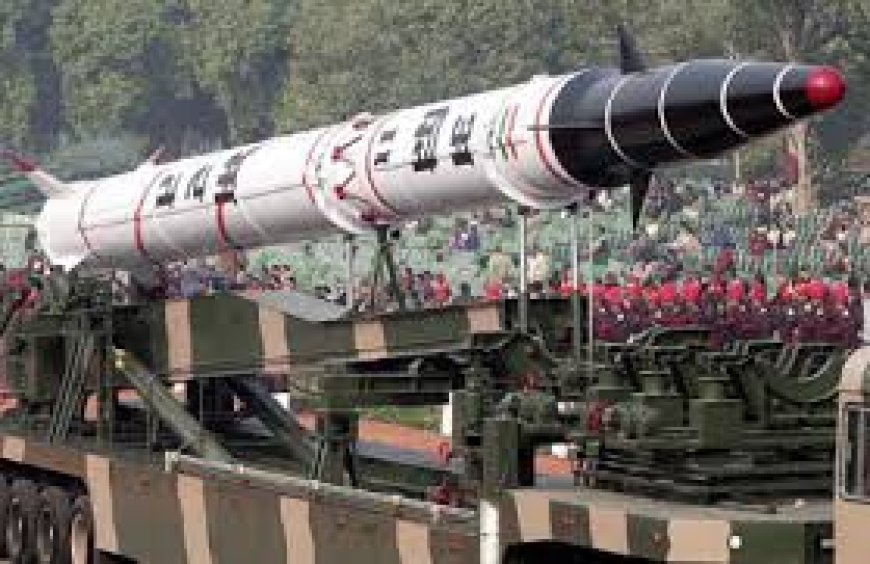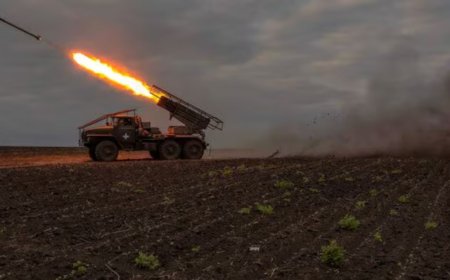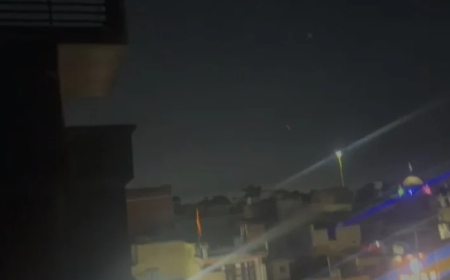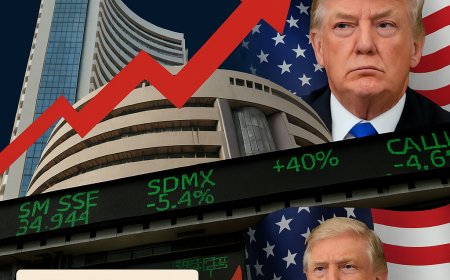Global Nuclear Weapons Map: Rising Risks of a New Arms Race
Discover where the world’s nuclear weapons are and why experts warn of a dangerous new arms race fueled by geopolitics and technology. Includes analyst insights and market impact.

A Resurgent Era of Nuclear Tensions
As global geopolitics grow increasingly unstable, the world is witnessing a resurgence in nuclear weapons development, raising alarms among analysts that a new arms race — more complex and dangerous than the Cold War-era standoff — may be on the horizon. From Washington and Moscow to Beijing and New Delhi, nations are modernizing, expanding, or repositioning their nuclear arsenals.
Global Nuclear Arsenal: A Snapshot
According to the latest report by the Stockholm International Peace Research Institute (SIPRI), the estimated global inventory of nuclear warheads in 2024 stood at approximately 12,512, of which around 9,576 are in active military stockpiles. Nine countries currently possess nuclear weapons, with the United States and Russia accounting for over 90% of all warheads.
Here’s a breakdown of global stockpiles:
-
Russia: ~5,580 nuclear warheads
-
United States: ~5,244 nuclear warheads
-
China: ~500 nuclear warheads
-
France: ~290 nuclear warheads
-
United Kingdom: ~225 nuclear warheads
-
Pakistan: ~170 nuclear warheads
-
India: ~164 nuclear warheads
-
Israel: ~90 nuclear warheads (undeclared)
-
North Korea: Estimated 30–50 nuclear warheads (unverified)
Notably, China has been the fastest-growing nuclear power in recent years, with the Pentagon forecasting it could possess over 1,000 warheads by 2030, altering the strategic balance in the Indo-Pacific.
The New Nuclear Landscape: Multipolar and High-Tech
Unlike the Cold War’s bipolar competition, today’s nuclear environment is multipolar and more technologically complex. The rise of cyber warfare, missile defense systems, and hypersonic delivery vehicles has added layers of strategic ambiguity.
“This isn’t your grandfather’s arms race,” says Dr. Fiona Hill, senior fellow at the Brookings Institution. “We are entering an era where deterrence is no longer just about numbers, but about speed, precision, and survivability of nuclear assets.”
China’s DF-41 intercontinental ballistic missile (ICBM), capable of carrying multiple warheads, and Russia’s hypersonic Avangard glide vehicle, which can evade conventional missile defenses, exemplify the qualitative shift in nuclear strategy.
Strategic Shifts and Global Flashpoints
Three key regions are emerging as potential flashpoints in this new nuclear calculus:
-
Europe: NATO’s eastward expansion and Russia’s suspension of the New START treaty inspections have reignited Cold War-style rhetoric and posturing.
-
Asia-Pacific: Rising tensions in the Taiwan Strait and the Korean Peninsula are driving nuclear modernization in both Beijing and Seoul, with Japan even debating a potential “nuclear sharing” strategy with the U.S.
-
South Asia: India and Pakistan’s ongoing rivalry continues to escalate, with both nations developing tactical nuclear weapons and delivery systems suited for battlefield use.
What’s Driving the Arms Buildup?
Several factors are converging to fuel the nuclear expansion:
-
Erosion of Arms Control Treaties: The INF Treaty collapsed in 2019, and the future of the New START agreement remains uncertain post-2026.
-
Geopolitical Rivalries: U.S.-China tensions, NATO-Russia hostilities, and Indo-Pak border skirmishes are compelling governments to double down on nuclear deterrence.
-
Technological Competition: Nations fear being left behind in the race for next-gen systems like hypersonics, AI-enabled targeting, and missile defense breakthroughs.
Investor and Market Context: Defensive Stocks and Strategic Metals
From an investor standpoint, this trend has significant implications. Defense contractors like Lockheed Martin, Northrop Grumman, and BAE Systems have seen stock prices rise steadily amid increased government defense budgets.
Meanwhile, strategic metals essential for nuclear tech—like uranium, lithium, and rare earth elements—have witnessed growing demand.
“Investors are watching not just for direct military procurement, but also the ripple effects on energy markets, resource extraction, and high-tech components,” notes Meera Joshi, defense market analyst at Fidelity Investments. “This arms race is as much about the supply chain as it is about geopolitics.”
Expert Warnings: Arms Control at a Crossroads
Despite increased nuclear activity, experts emphasize that diplomacy remains a crucial tool to avoid catastrophic escalation.
“We need a modern framework for arms control that includes China and emerging cyber threats,” warns Hans Kristensen, Director of the Nuclear Information Project at the Federation of American Scientists. “Without transparency and verification mechanisms, miscalculations could prove fatal.”
Even the United Nations has echoed concern, with Secretary-General António Guterres stating in a recent address: “The era of brinkmanship must give way to a new era of disarmament and trust.”
Investor Outlook: Defensive but Cautious
While defense sector growth is evident, analysts warn that prolonged global instability could affect broader market sentiment.
-
Short-Term: Positive outlook for defense, surveillance, and energy infrastructure sectors.
-
Medium-Term: Rising inflation and potential sanctions in geopolitical hotspots could disrupt supply chains.
-
Long-Term: Investment in diplomatic resolutions and treaties may become essential for sustainable growth in global markets.
A Critical Juncture for Humanity
The world stands at a nuclear crossroads. While modernization may seem like a strategic imperative for many nations, experts agree that the only lasting path to peace lies in renewed dialogue, stronger treaties, and global cooperation.
With multiple nations now engaged in upgrading and expanding their nuclear capabilities, the risk of missteps has never been higher. The challenge is to avoid repeating history — or worse, outdoing it.
What's Your Reaction?
 Like
0
Like
0
 Dislike
0
Dislike
0
 Love
0
Love
0
 Funny
0
Funny
0
 Angry
0
Angry
0
 Sad
0
Sad
0
 Wow
0
Wow
0












































































